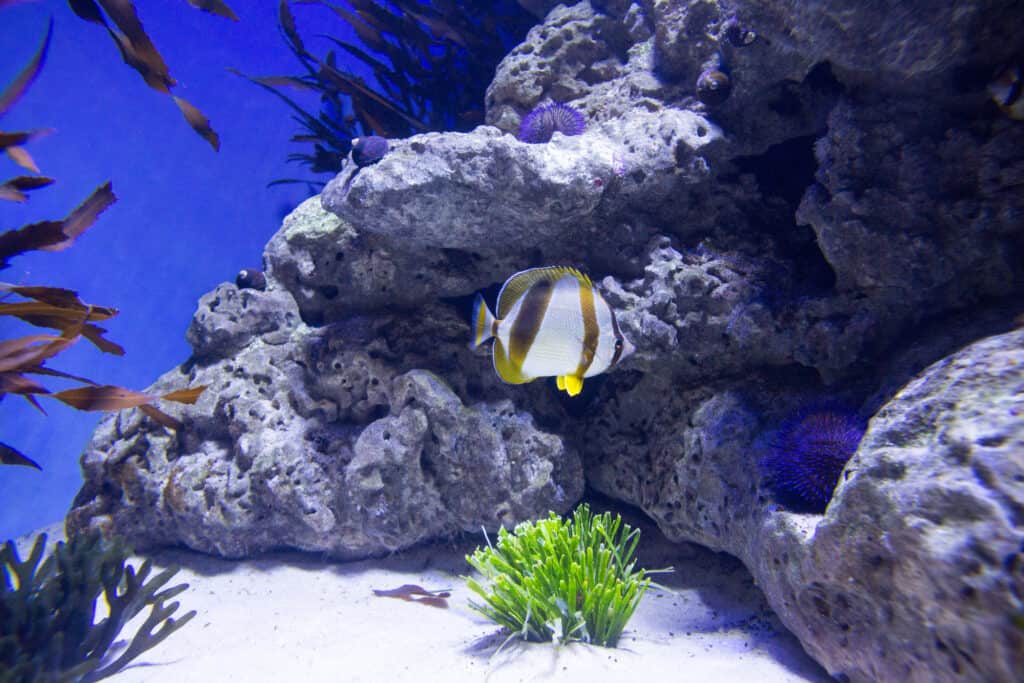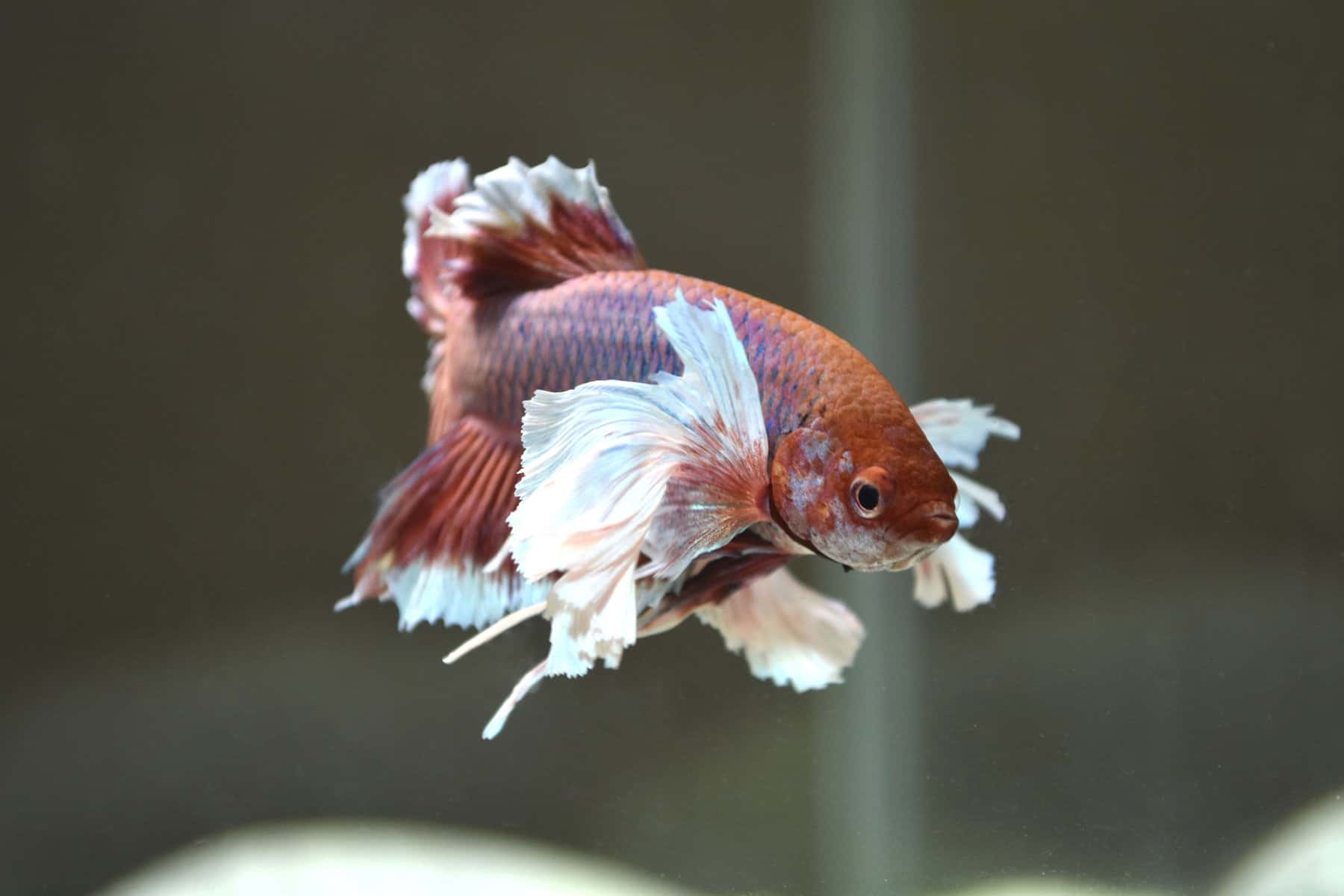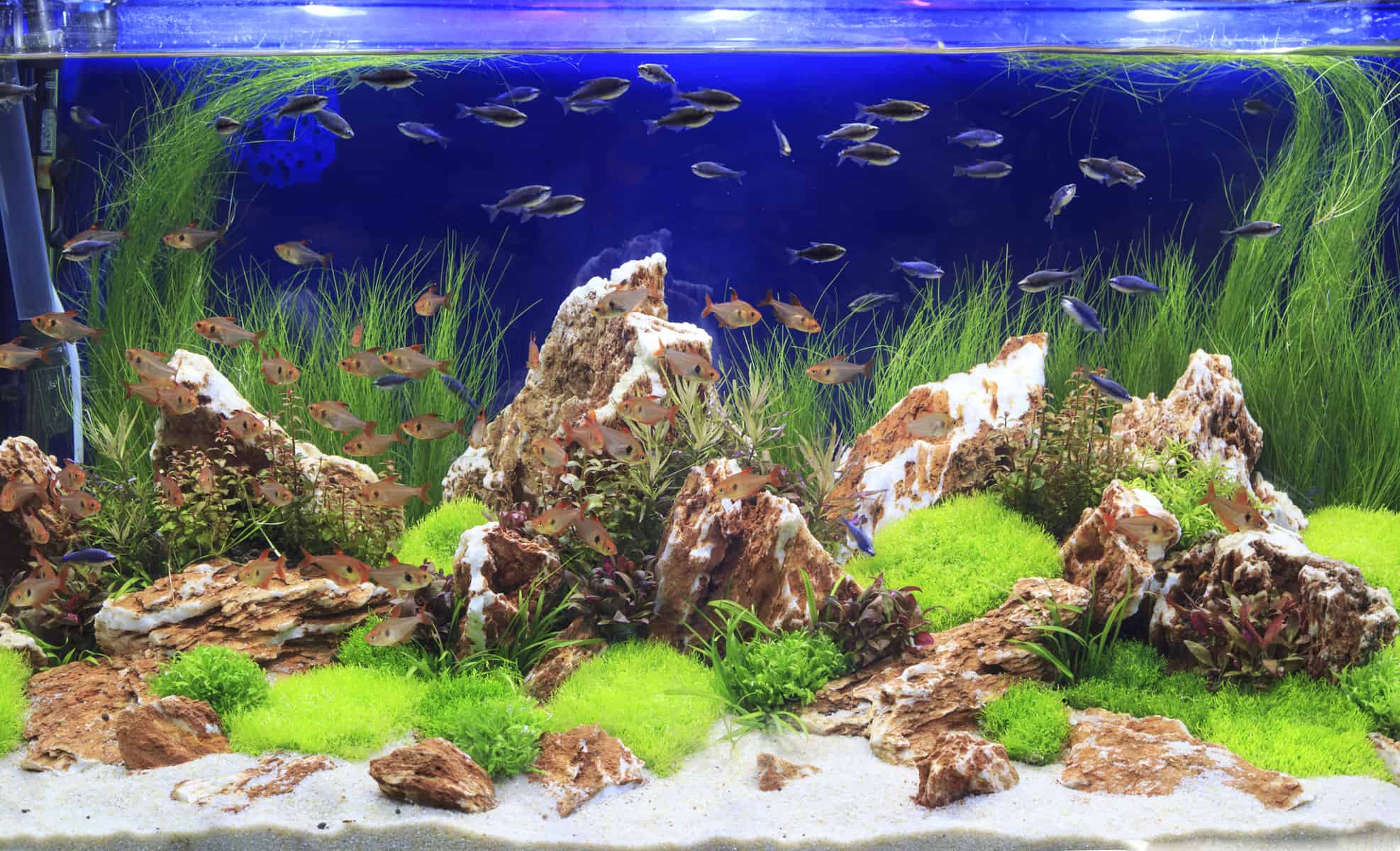Limestone is a beautiful type of rock that can be used in aquariums to raise the water’s pH and hardness levels.
But since betta fish prefer water that is fairly soft with a neutral pH, limestone is unsuitable to add to betta tanks in most circumstances.
But how does pH affect your betta fish’s health and which types of rocks can make a better choice? Let’s find out.
What Is Limestone?
Limestone is a sedimentary rock made from calcium carbonate (CaCO3) and is mostly made up of the minerals calcite and aragonite: different crystal forms of calcium carbonate.
If you’ve ever seen a white cliff or written on a blackboard with chalk, you’ll be well-familiar with what limestone is!
But you may be surprised to know that limestone is often formed by the deposition and consolidation of the skeletons of marine invertebrates, such as corals and shellfish.
In its calcite form, limestone can contain high amounts of magnesium, but otherwise, it is fairly chemically pure, with quartz and clay minerals sometimes contributing to 5-10% of its total mass.
Is Limestone the Same as Dolomite?
No. Dolomite is a closely related calcareous rock to limestone, which contains a high percentage of the mineral dolomite, CaMg(CO3)2.
But because of its high calcium content, dolomite has similar effects on water chemistry as limestone.
How Limestone Affects Water Chemistry
When submerged in water, limestone is a strong alkalizing agent.
Calcium carbonate, the fundamental basis of limestone, has a pH of 9.9, meaning that when it dissolves in water, it increases the water’s pH substantially.
Since calcium and the other magnesium are the two most significant elements that increase water hardness, limestone will significantly increase water KH (carbonate hardness) and GH (general hardness) too.
Limestone in Aquariums
Since limestone has such powerful alkalizing properties, some aquarists have utilized it to raise their fish tank water’s pH.
This is especially useful when keeping fish species that prefer more alkaline conditions than their local water provides.
The use of limestone in aquaculture is most common in African cichlid aquariums and marine reef tanks where a high pH is needed. But is a high pH needed for betta tanks?
A Betta’s Favorite Water Parameters
Betta splendens (aka. the Siamese fighting fish) comes from the tropical regions of Thailand and Cambodia in Southeast Asia. To create the ideal aquarium environment for them, we need to replicate their natural water conditions.
In the wild, betta fish swim among rice paddies, swamps, and forest pools. These natural habitats tend to be slow-moving and low in oxygen, with fairly soft water that is neutral-acidic, with a pH of 6.0 – 7.5, and a hardness of 5-12 dGH.
If your aquarium water parameters don’t fall within this range, your betta could experience significant health problems.
Effects of Water That’s Too Alkaline for Betta Fish
If your aquarium water is too alkaline for your betta (i.e. higher than 7.5) your betta may exhibit symptoms of a condition known as alkalosis.
Alkalosis is a serious ailment that will cause your betta to swim erratically, scratch themselves on rocks, or even try to jump out of the tank!
It can also cause their fins to permanently spread wide and excess mucus to exude from their gills in an attempt to prevent gill damage. Alkalosis will make your betta more vulnerable to external parasites such as ich and velvet diseases too.
If you notice any of these symptoms in your pet betta, be sure to test your water to make sure pH levels are within safe bounds.
Effects of Water That’s Too Acidic for Betta Fish
If your aquarium water is too acidic for your betta fish, it can also be very detrimental to their health.
If your water pH dips below 6, it can begin to make your betta’s skin more sensitive and vulnerable. In extreme cases, it could even cause burns or lesions.
A betta fish in unsuitably acidic water will become stressed, and may swim frantically as if trying to escape from the tank.
Acidic water, by the way, is also harmful to aquarium snails, which many betta fish owners like to keep in their betta tanks. Pet snail species such as nerite snails, mystery snails, and rabbit snails need a water pH of at least 7 to maintain a healthy shell.
How To Find Out if Your Water Parameters Are Good for Betta Fish
Now that we understand the dangers of water that’s too acidic or alkaline for betta fish, you’ll want to be sure that your water is in the right range.
To do this use a reliable aquarium water testing kit.
API test kits are tried and trusted by aquarium owners and tend to be more accurate than ‘test strips’. If it turns out that your water is too acidic or alkaline for your betta fish, you’ll need to adjust it.
Using Limestone To Raise pH in Betta Tanks
In the unlikely event that your water has a pH of less than 6.0-7.5, you could use an alkaline agent such as limestone to raise the water’s pH to the desired level.
As the limestone gradually dissolves in the water it will gradually increase both the water’s pH and hardness levels.
The greater the level of limestone, the more pronounced of an effect it will have on the tank. Keep testing your water every 2-4 weeks to see how the limestone is influencing it.
If your water is already in the correct range, however, I wouldn’t recommend using limestone, since it might well increase your water pH out of the safe range for betta fish.
Ways To Make Your Water More Acidic
If you happen to live in an area with calcareous water, such as the Southeastern United States, your water pH might be higher than the preferred range of your betta fish.
In this case, you will have to find a way to reduce the pH level to make your betta tank a safe environment.
This can be done with acidifying agents like tannins. Tannins are present in certain organic materials such as dead tree leaves, hardwoods, and peat.
When these are added to an aquarium, the water becomes an attractive amber color, and the pH is lowered in proportion to how many tannins are released.
Some favorite tannin sources for aquarists include Indian almond leaves, bogwood, and driftwood. Aquarium soils that contain peat will also have the same effect.
Some fish keepers also believe that tannins help to keep their fish healthy and better protected from diseases, though sadly there has been little scientific research on the subject.
Carbon dioxide also makes the water more acidic, meaning that carbon dioxide injection for planted tanks may also help to increase the acidity of a fish tank.
How Do You Know if a Rock Contains Limestone?
Limestone is typically a whitish color and is quite distinctive among rocks. But other rocks such as dolomite can also contain lots of calcium carbonate and have similar effects on water chemistry.
A good way to tell if a rock is limestone or contains calcium carbonate is to place a few drops of white vinegar on the rock. If it fizzes and foams, you’ve got some sort of calcium carbonate in your rock and it’ll make your water more alkaline.
If it doesn’t, it’s a different kind of rock that needs to be identified before you add it to your aquarium.
What Are the Best Rocks To Use in Betta Tanks?
Since limestone is likely to make the water too hard and alkaline for your betta fish, in most cases you’d be better off finding other safe rocks to create some attractive caves and crevices.
Granite, quartzite, rainbow rock, as well as semi-precious stones like quartz crystals, jasper, citrine, jade, ametrine, tiger’s eye, amethyst, agate, black tourmaline, and petrified wood are all inert, meaning they won’t affect your water chemistry.
Slate and shale, mountain stone, and lava rock are also inert, but caution is advised since the rough or sharp edges could potentially damage your betta’s delicate fins.
Conclusion
Limestone can be a useful type of rock for some tropical fish but is usually unsuitable for betta tanks due to its tendency to increase water pH and hardness beyond the preferred range of your betta fish.
If your tap water is especially acidic, then adding small amounts of limestone could help to increase the pH to the ideal range.
Whether you’re attempting to make your water more alkaline or more acidic, always test your water at least once per month to ensure it’s in the ideal range for your betta fish.



